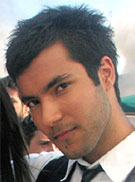 "A brain teaser is a form of puzzle that involves a lot of cogitating or mental/cognitive activity to solve. Normally, this includes thinking in conventional ways with given constraints in mind; sometimes, it also involves lateral thinking. Logic puzzles and riddles are specific types of brain teasers." - Wikipedia "A brain teaser is a form of puzzle that involves a lot of cogitating or mental/cognitive activity to solve. Normally, this includes thinking in conventional ways with given constraints in mind; sometimes, it also involves lateral thinking. Logic puzzles and riddles are specific types of brain teasers." - Wikipedia
This week's column is dedicated exclusively to my dear friend Yavuz who has just begun working for the prestigious consulting company, Oliver Wyman. His adventures through the interview process, and even before, as he twisted his mind up with brainteasers, have inspired me to deliver to you this week's topic: brainteasers at job interviews.
If you are into consulting, you will have to face these questions sooner or later. I've written a similar piece before with questions like these, and I've been getting many emails lately from my readers who are asking me if I could provide them with more examples or if I could name a book that deals specifically with this issue. My answer is, yes, there certainly are many books. All you have to do is log onto Amazon's website and search through books under the category of "consulting interviews."
Here are two more questions (with answers!) for you to enjoy. Don't just skip to the answers though. Try to solve the problems first. DONT RUIN THE FUN!
~ At 3:25 p.m., what is the angle between the hands on a clock?
Choose a point to anchor your angle calculations, say, 12 o'clock. Calculate the angle between the minute hand at 3:25 and 12 o'clock: (25-0)/60*360° = 150°. Calculate the angle between the hour hand at 3:25 and 12 o'clock: 3/12*360+25/60* 1/12*360° = 102.5°. At 3.25pm, the angle between the hour hand and minute hand is the difference: 150°-102.5° = 47.5°.
~ What's the probability of at least two players on a football field of 22 sharing the same birthday?
This is a classic problem in probability and statistics, often called the Birthday Problem. It is usually simplified by assuming: one, that nobody was born on February 29, and two, that people's birthdays are equally distributed over the other 365 days of the year.

Yiğit Turhan (EE/IV)
yt_coolhunter@yahoo.com
 |







